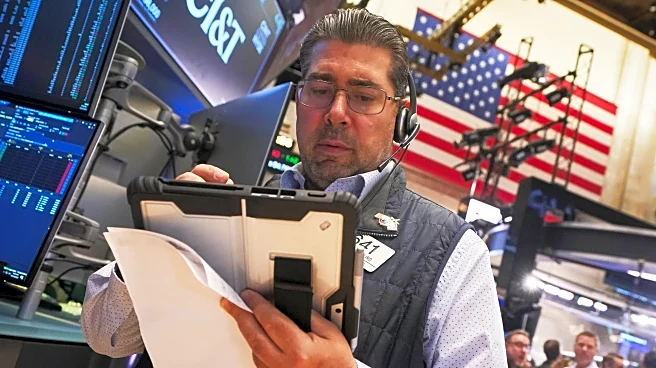What's Happening?
As 2025 comes to a close, global investors continue to show reluctance to fully commit to American assets. This trend began with President Trump's 'Liberation Day,' which led to a sell-off of U.S. stocks,
bonds, and the dollar, known as 'Sell America.' Despite Wall Street's recovery, international investors are seeking portfolios that exclude U.S. equities. Factors driving this trend include dissatisfaction with U.S. trade policy and concerns over AI-driven market bubbles. The MSCI World ex USA Index has outperformed the S&P 500, reflecting a shift in investment preferences.
Why It's Important?
The hesitancy of global investors to fully engage with U.S. assets highlights the impact of political and economic factors on investment strategies. The 'Trump Dump' reflects broader concerns about U.S. trade policy and market dynamics, influencing global investment flows. Understanding these trends is crucial for stakeholders, including investors and policymakers, as they navigate the complexities of international markets and economic influences. The shift towards non-U.S. assets underscores the importance of diversification and risk management in investment portfolios.
What's Next?
As global investors continue to reassess their asset allocations, the focus will remain on political developments and economic indicators influencing U.S. markets. Stakeholders will need to monitor trade policy, AI-driven market trends, and monetary policy decisions to inform investment strategies. The resolution of trade tensions and economic uncertainties will play a crucial role in shaping global investment flows and market dynamics. Understanding the factors driving investor behavior can provide insights into potential market movements and inform strategic planning.
Beyond the Headlines
The reluctance to fully engage with U.S. assets raises questions about the role of governance and policy in shaping economic outcomes. The focus on diversification and risk management reflects broader shifts in investment strategies, with implications for market stability and economic resilience. Understanding these dynamics is crucial for fostering informed decision-making and resilience in the face of uncertainty.













